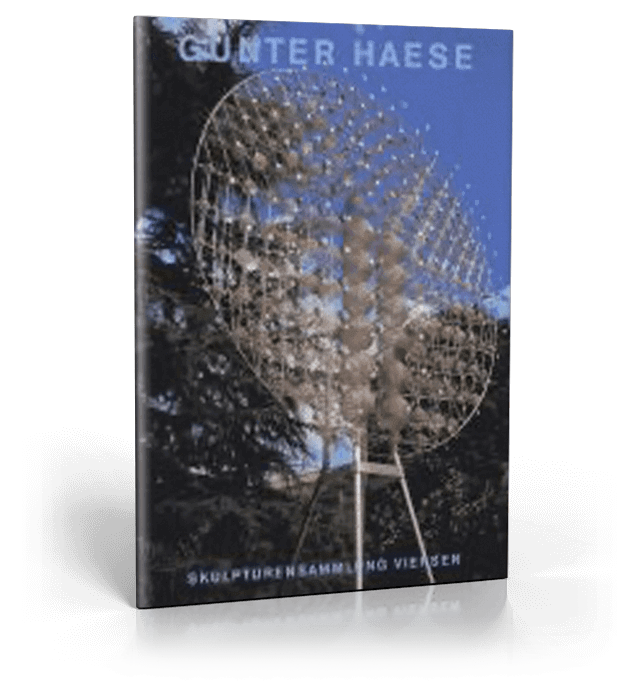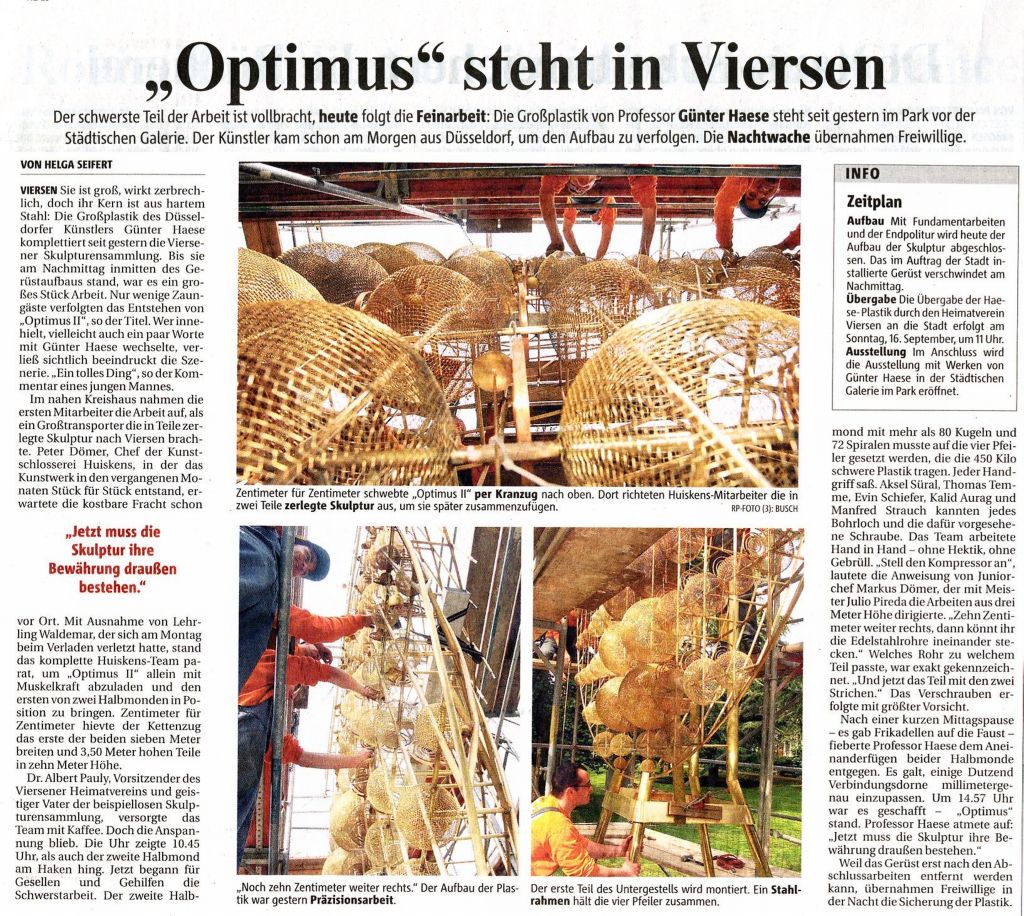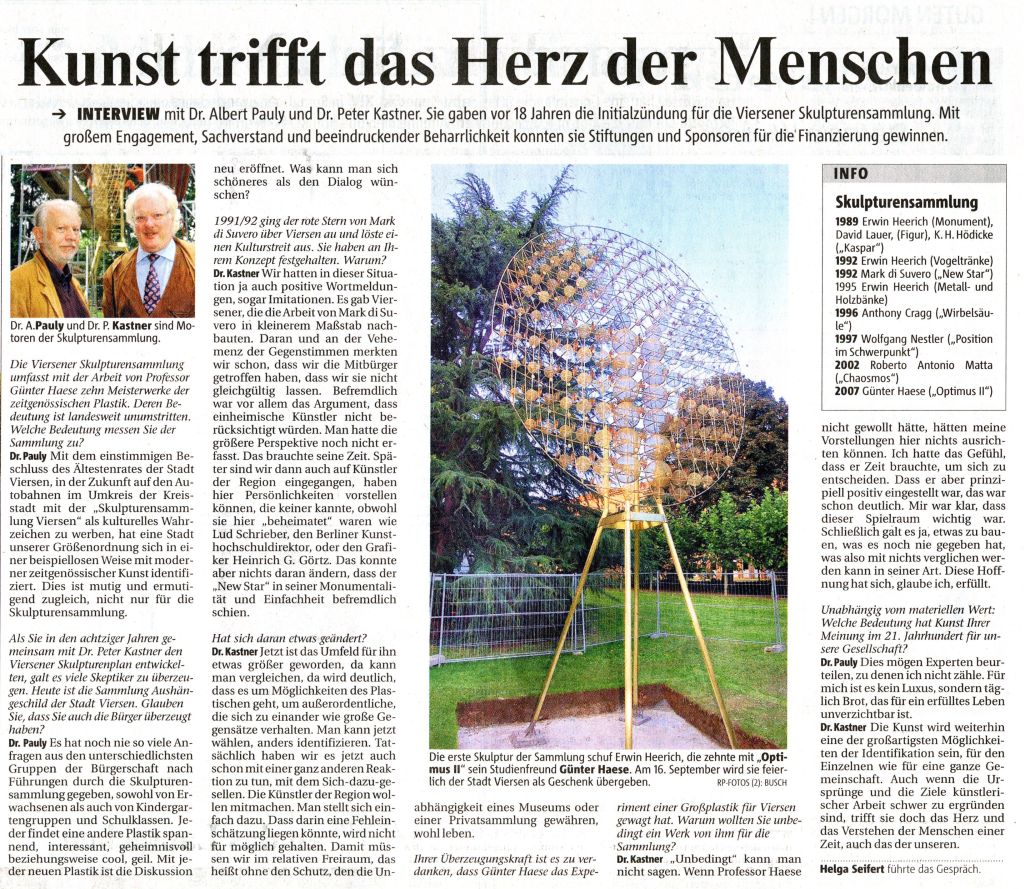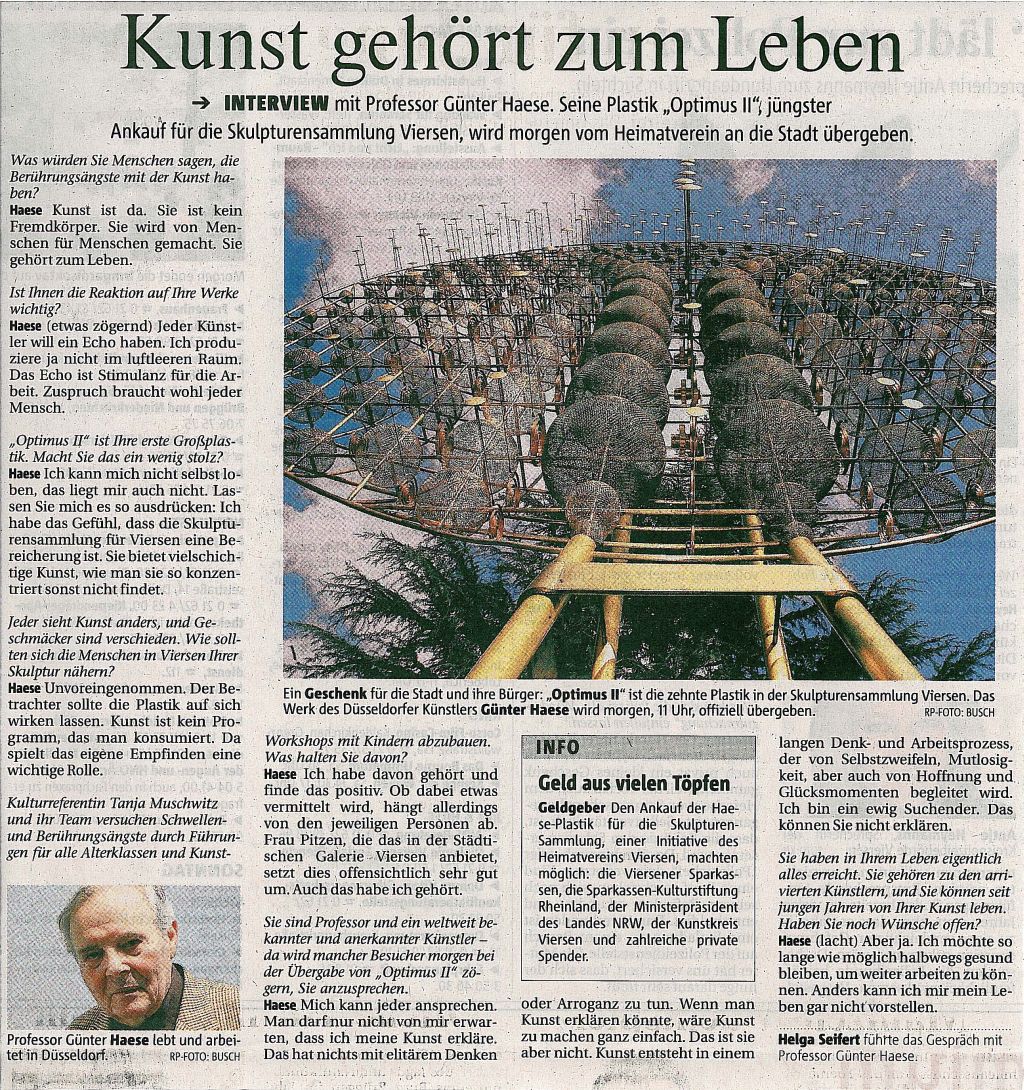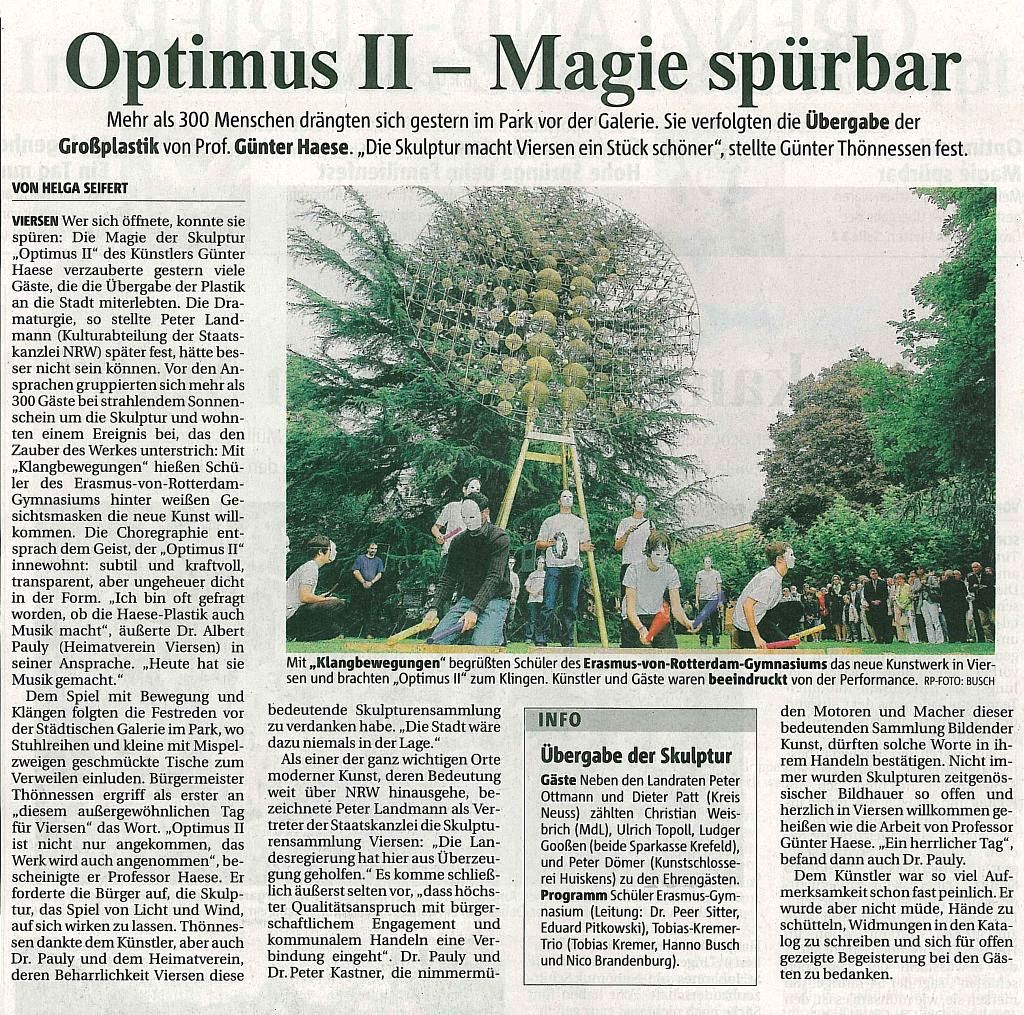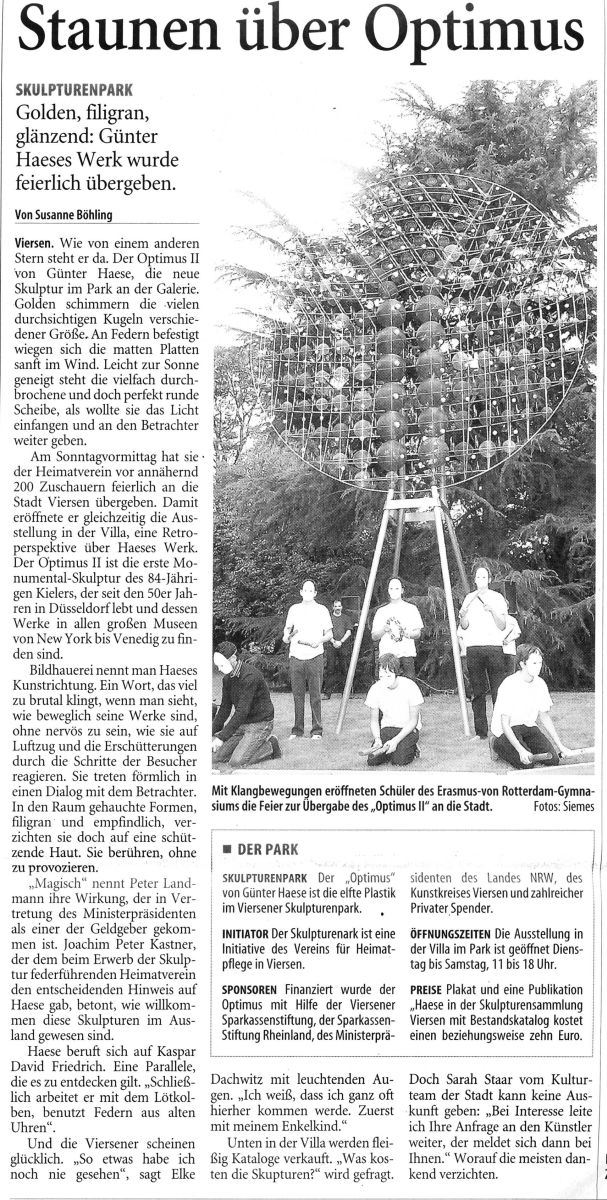Optimus II
Skulptur von Günter Haese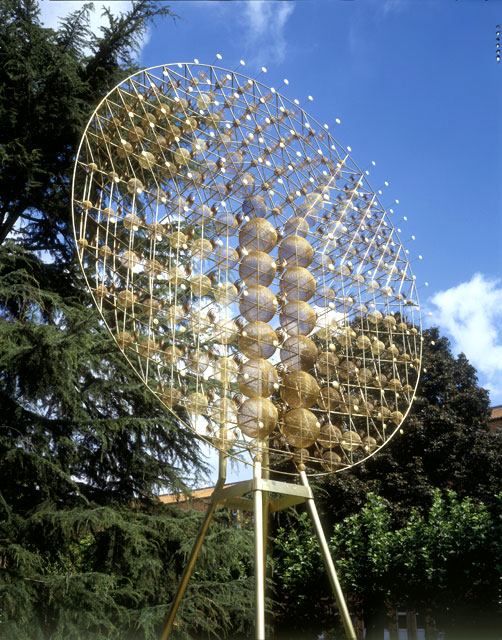
Informationen zur Skulptur
Künstler
Optimus II
Material
Größe
Entstehungsjahr
2006 - 2007
Aufstellungsort
Park neben der Städtischen Galerie
Ausführung
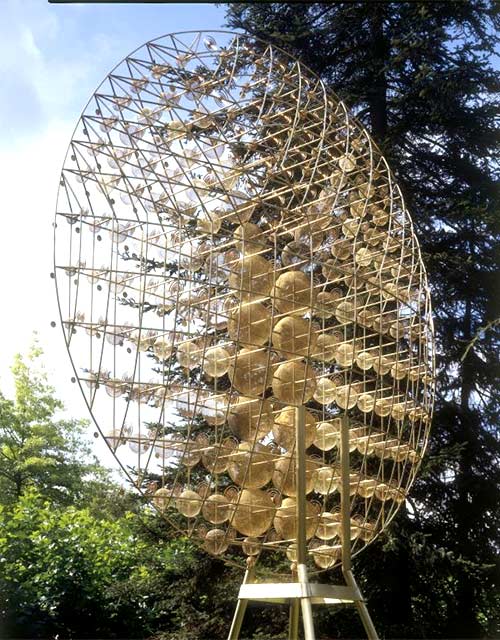
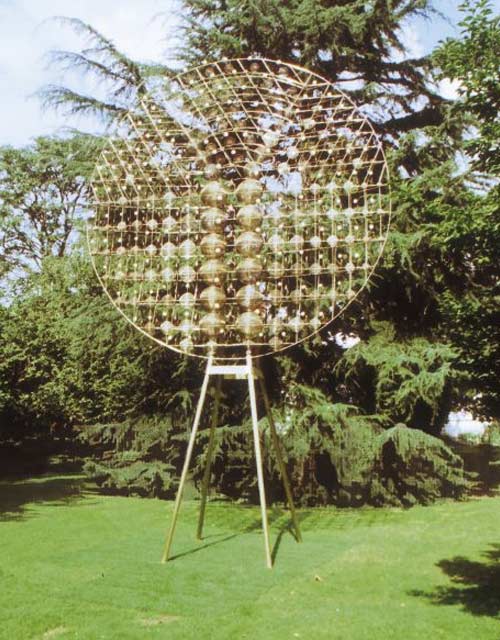
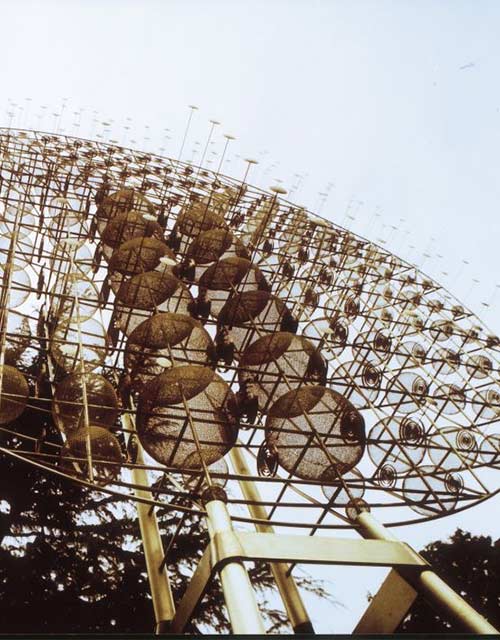
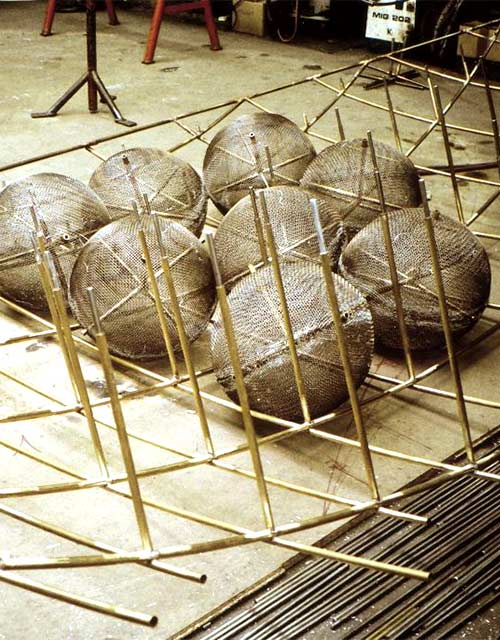
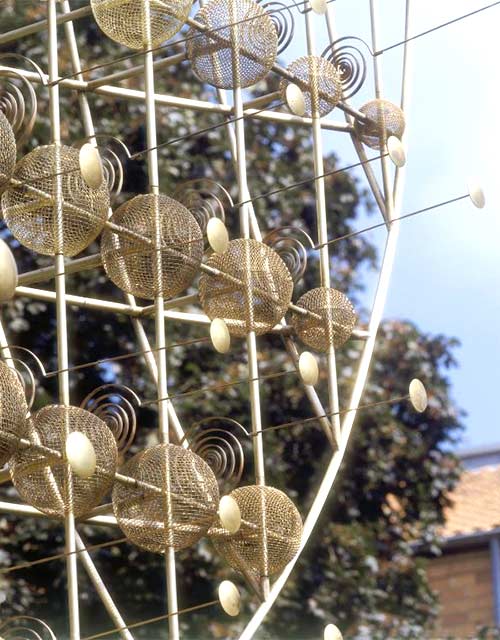
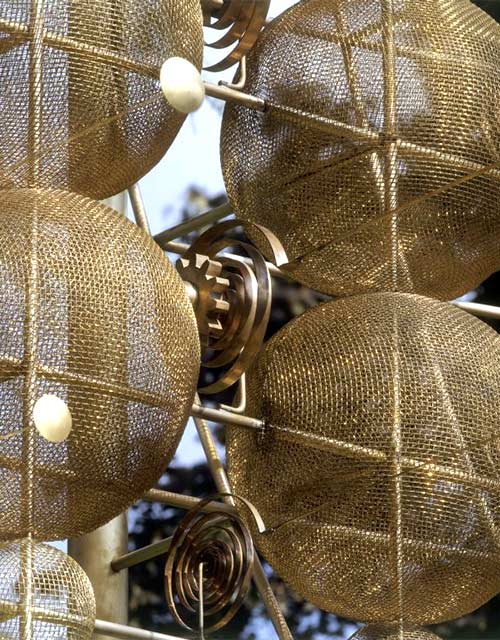
Günter Haese formt filigrane Gebilde aus Draht. Messing und Phosphorbronze sind seine Materialien, mit denen er geschnitten und gebogen, als Geflecht oder als Spirale, verlötet und zu räumlich-plastischen Gebilden zusammengefügt, eine einzigartige Körperlichkeit entwirft. Bisher hat er alles selbst gemacht und seine Arbeiten haben sich in überschaubaren Größen (ca. 50-200 cm Höhe) gehalten.
Die Transportschachteln aus Holz werden ebenfalls eigenhändig, zusammen mit den Objekten, die sie aufnehmen sollen, hergestellt. Haese liefert alles komplett, das fertiggestellte Werk, seine Aufbewahrung und zuletzt den Titel, der zumeist einer poetischen Assoziation folgend, formuliert und manchmal abgeändert wird.
Seit 1963 hat er mit großem Erfolg sein Werk zu internationaler Geltung bringen können und diese Stellung bis heute behauptet.
Mit seinem Engagement für die Skulpturensammlung Viersen geht Haese erstmals andere Wege. Nach langer Überlegung, mehreren Ortsbesichtigungen und intensiven Gesprächen ist für ihn die Möglichkeit einer Monumentalplastik im öffentlichen Raum und dazu noch in einem Ensemble völlig andersartiger, zeitgenössischer Werke zu einer künstlerischen Herausforderung geworden, der er sich mit der ihm eigenen Behutsamkeit stellt.
Natürlich geht es dabei nicht einfach nur um eine Vergrößerung der Maße eines Haese-Objektes, sondern vor allem darum, in die neue Situation die künstlerischen Qualitäten des bisherigen Werkes einzubringen. Die feingliedrige und zarte Bauweise aus Draht, die durchbrochene Räumlichkeit, die vibrierende Beweglichkeit seiner einzelnen Glieder und ihre Reaktionsfähigkeit auf Luftbewegungen, Licht- und Glanzreflexe im Zusammenspiel mit festen und beweglichen Teilen der Konstruktion und die spielerische Beschreibung des lufterfüllten Raumes als eine belebte Sphäre.
Situation in der Firma Huiskens
Eine der bloßen Mechanik beraubte Kinetik, die sich in eine fast organisch zu nennende Bewegungswillkür umformt. Das gebaute Gestell als Organ - daher der immer wieder vorgebrachte Vergleich mit Antennen und Raumsonden, den Haeses Objekte evozieren. Sie weisen in die Weite des Raumes und behaupten die Möglichkeit seiner Durchquerung.
Zugleich sind sie zellenartige Bauten, in denen Reihung, Regelmäßigkeit und Abgeschiedenheit eines Inneren wie durch eine transparente Haut als mögliche Beweglichkeit in sich erfahrbar wird. Zellenaufbau und Tentakel, Fühler und Antenne und zugleich gegliederter, seriell aufgebauter und regelhaft erscheinender Körper, in dem die Bewegung als eine seiner möglichen Seinsweisen wie ein sporadischer Reflex oder auch wie ein wehender Atem - als unendlich zarte Empfindung - erscheint.
Mit veränderten statischen Bedingungen und anderen Gewichtsverhältnissen dieser subtilen Ästhetik zu entsprechen, ist nicht leicht. Eine Fülle gänzlich neuer Entscheidungen mußte gefällt werden. Die Montage dieser Plastik im öffentlichen Raum ist noch komplizierter als die ihres Models.
Der Realitätscharakter des Kunstwerks hat sich dabei verändert. Sind jetzt alle Werke Haeses potentiell Modell für eine mögliche Ausführung in anderer Größe? Theoretisch stimmt der Künstler dem zu, aber für den Einzelfall ist damit noch nichts gesagt. Optimus ist der Erste in der neuen Umgebung, in einer veränderten Welt.
Günter Haese
ab 1956
ab 1963
ab 1964
1966
1967
1969
1972
1974
1975
1978
1979
1980
1981
1982
1984
1985
1986
1992
1994
2002
2006
Presse
Publikation "Günter Haese"
Joachim Peter Kastner
Mit Bestandskatalog der Skulpturensammlung zum Zeitpunkt der Veröffentlichung.
Viersen 2007
Verkaufspreis: 10 €
ISBN 978-3-9805339-6-1

